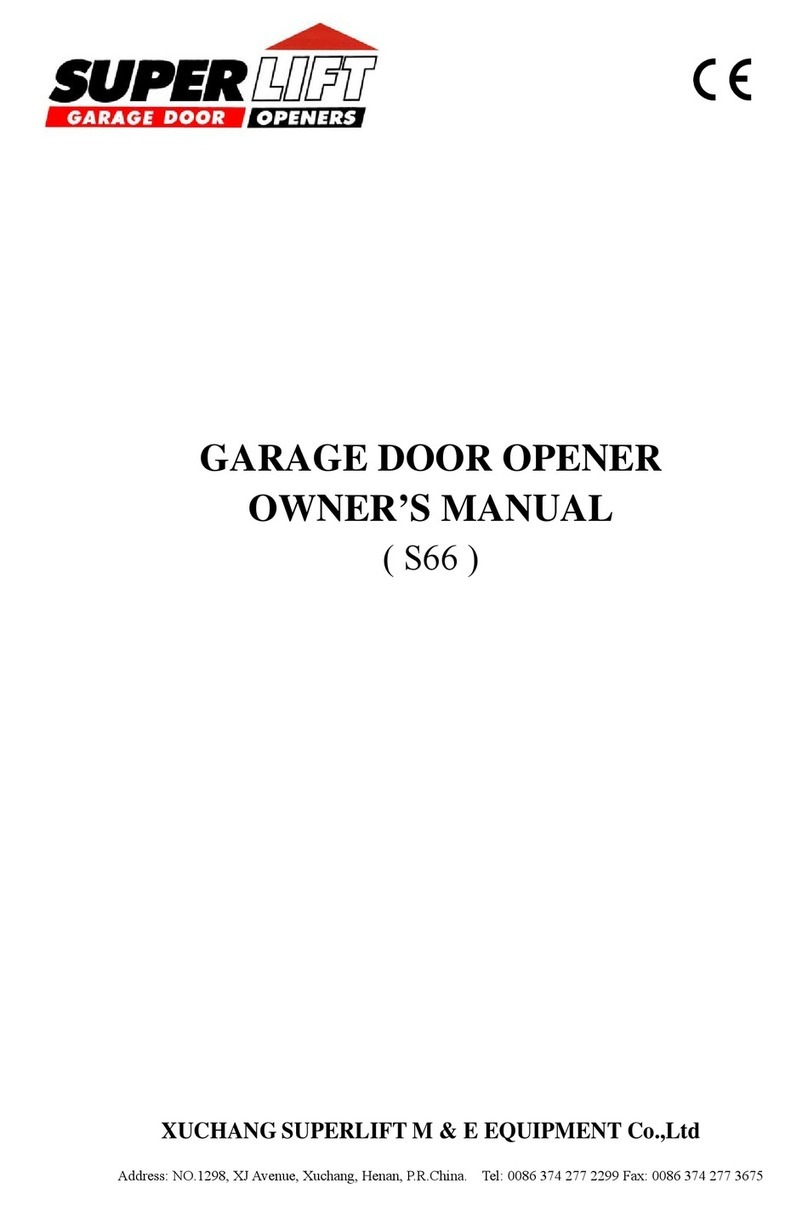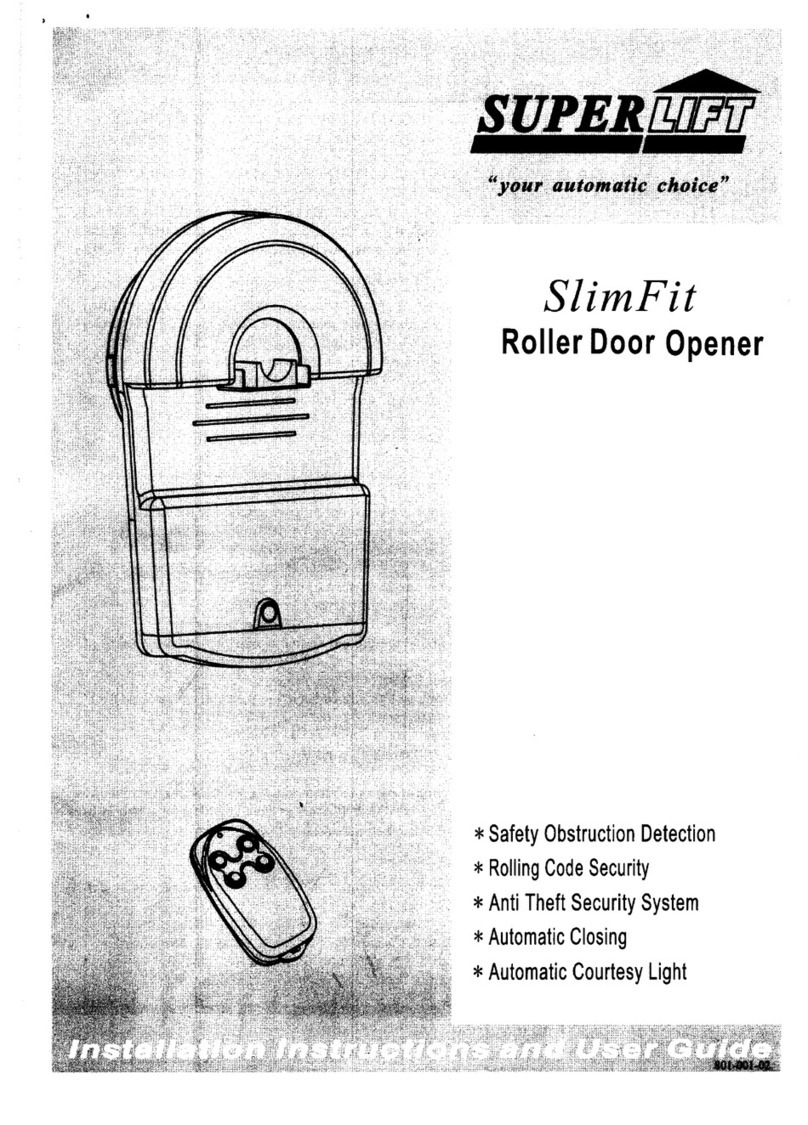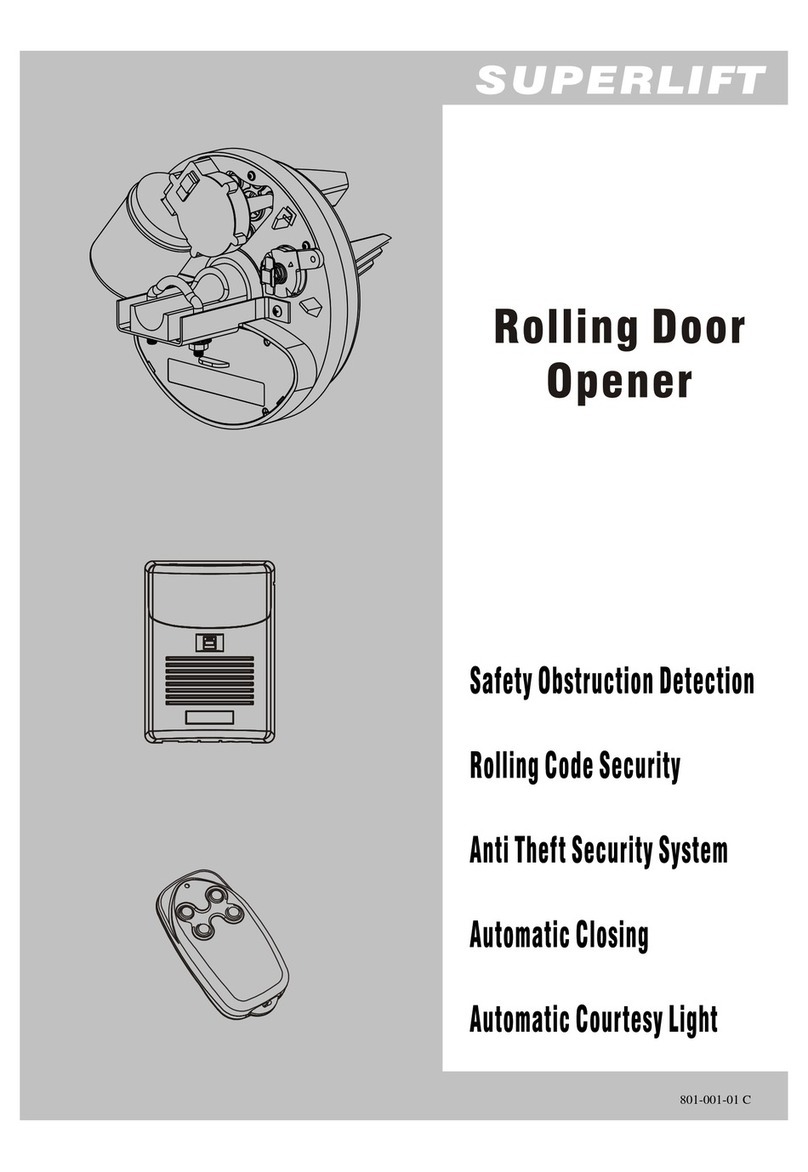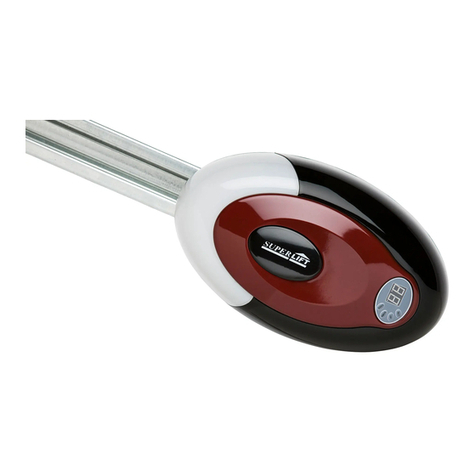
Important Safety Recommendations ………………….………………………. 3
Warranty Exclusions ……………………….……………………………………………………………. 4
Technical Specifications …………………................................................................ 5
Assembly Instructions …………......................................................................... 6
Assembling Drive Rail to Power Head ……………………………………………………………. 6
Drive Rail Hanger Options …….…………………………………………………………………… 6
Drive Belt Tensioning ………………………………………………………………………………… 6
Installation Instructions ………………..................................................................... 7
Identifying Garage Door Type ………………………………………………………………. 7
Mounting Header and Door Bracket …………………………………………………………….. 7
Attaching Drive rail to Header Bracket …………………………………………………………….. 8
Attaching Power Head to Ceiling ……………………………………………………………………. 8
Mounting Connecting Arms to Carriage and Door …………………………………………. 9
Disengaging the Garage Door …………………………………………………………………….. 9
Engaging the Garage Door ……………………………………………………………………………. 9
Settings and Adjustments (Programming the Operator) .......................... 10
Preparation ………………………………………………………………………………………… 10
Coding and Deleting Transmitters …………………………………………………………………….. 10
Setting Door Travel …………………………………………………………………………………………. 11
Adjusting Safety Force Sensitivity and Testing …………………………………………………. 11
Setting Travel Speed ………………………………………………………………………………………….. 11
Auto Close Settings ………………………………………………………………………………………….. 12
Auto Close Door Position Setting ………………………………………………………………………. 12
LED Time Setting …………………………………………………………………………………………… 12
Auto Reverse Height Setting ……………………………………………………………………………… 13
Setting Partial Opening Height ………………………………………………………………………. 13
Code Four Buttons to One Door Setting …………………………………………………………. 13
Transmitter Quantity Setting ……………………………………………………………………………… 14
Auto Reverse Ignore Setting (For European Customers) …………………………………….. 14
Pedestrian Door in Garage Door Setting (For European Customers) ………………… 14
Installation, Enabling and Testing Safety Beam Function …………………………………….. 15
Maintenance Alarm Setting ……………………………………………………………………………… 16
Run Button Function …………………………………………………………………………………………… 16
Transmitter Battery Replacement ………………………………………………………………………. 16
Wall Switch (Wireless) ……………………………………………………………………………………. 16
Wall Switch (Wireless) Battery Replacement ………………………………………………….. 16
Output Terminals …………………………………………………………………………………. 17
Installation of Wall Switch …………………………………………………………………………….. 17
Accessories …………………………………………………………………………………………………….. 17
Parts List …………………………………………………………………………………………………….. 18
Trouble Shooting Guide …................................................................................. 19
Notes ……………………………………………………………………………………………………………. 20

































